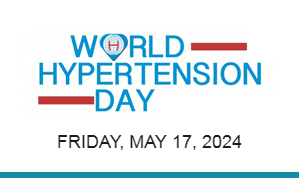21st European Meeting on Hypertension and Cardiovascular Prevention
In a study designed to evaluate the strategy used by practicing doctors in Greece for the management of hypertension, George Stergiou, MD, Sotiria Hospital, Athens, Greece, reported that hypertension was effectively controlled by the early introduction of combination pharmacotherapy that complied with the European Society of Hypertension guidelines. However, optimal control of blood pressure (BP) remains a problem.
DEMANT was a national, prospective, observational study in which clinicians from primary, secondary, and tertiary healthcare services in Greece recruited and initiated treatment for treatment naïve hypertensive adults. Demographic characteristics, co-morbid medical conditions, cardiovascular risk factors, drug treatment, and office BP were recorded at baseline and during 3 follow-up visits scheduled between February 2007 and July 2009. Of the 67 physicians invited to participate, 43 contributed data for 556 patients (mean age 61 ± 12 years; 47% men). Complete follow-up was obtained for 90% of patients. Besides hypertension (100%), 77% of patients were diagnosed with dyslipidemia, 45% were obese, 26% were smokers, 17% were diabetic, and 10% had a history of cardiovascular disease (CVD).
Combination treatment was initiated in 47% of patients and monotherapy in 53%. Those receiving combination therapy were significantly older (p <0.001), more obese (p <0.01), had higher rates of diabetes (p <0.01) and CVD (p <0.001), and higher systolic BP (SBP) levels at baseline (p <0.05), and higher rates of decline on treatment (p <0.001).
At the first follow-up visit, 31% of participants on monotherapy were switched to combination therapy for a total of 64%. At the 2nd and 3rd follow- up visits a total of 70% and 71% of patients, respectively, were on combination therapy. At the 2nd follow-up visit no treatment changes were initiated in 78.5% of the participants, despite 39% having an office BP >40/90 mmHg (at follow-up visit 3, the values were 92% and 26.5% respectively). A total of 27% of the participants received monotherapy throughout the study, 49% received combination therapy throughout the study, and 23% switched from monotherapy to combination therapy.
The SBP decline at the 3rd follow-up visit was larger with combination therapy compared with monotherapy (p <0.001). There was a trend towards higher BP control rates in patients who started with combination therapy compared with those who started with monotherapy (77% vs. 71%, p = NS). For initial drug monotherapy, 41%, 20%, 21%, and 16% were treated with angiotensin II receptor blockers (ARBs), ACE inhibitors (ACEIs), calcium channel blockers (CCBs), or beta blockers (BBs), respectively. For initial combination therapy, 42%, 26%, 12%, 12%, and 8% were treated with ARBs + diuretics, ARBs + CCB, ACEI + diuretics, CCBs + BBLs, or ACEI + CCBs, respectively.
In multiple regression analysis, independent predictors (p <0.05) of treatment initiation with combination therapy were increasing age, diabetes mellitus, coronary heart disease, body mass index >30 kg/m2, newly diagnosed hypertension, (inverse) and elevated SBP.





